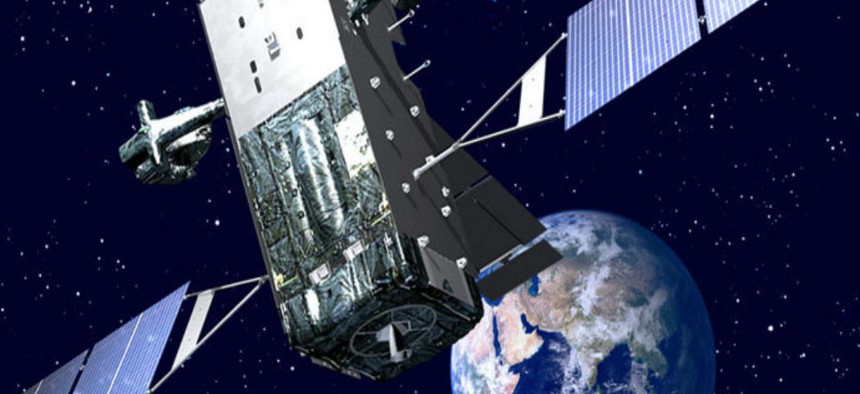Laser comms from space gets another test
NASA prepares to demonstrate laser communications in a relay experiment from geosynchronous orbit.
Upcoming NASA missions designed to demonstrate the feasibility of using high-capacity laser communications in space could eventually benefit bandwidth-strapped Defense Department agencies.
The U.S. space agency is preparing the next step in its effort to augment narrower radio frequencies with the Laser Communications Relay Demonstration scheduled to launch in 2019. (The mission had previously been scheduled for as early as this year.) According to mission leader NASA Goddard Space Flight Center, LCRD will demonstrate the data relay using laser and RF communications. It will beam laser signals almost 25,000 miles (40,000 kilometers) from a ground station in California to a satellite in geostationary orbit, then relay that signal to another ground station.
Meanwhile, Deep Space Optical Communications (DSOC), led by the Jet Propulsion Laboratory (JPL), is scheduled to launch in 2023 as part of an upcoming NASA Discovery mission. That mission will fly to a metallic asteroid, testing laser communications from a much greater distance than LCRD, program officials said.
In 2013, NASA demonstrated the ability to transmit high-rate data to the moon and back during its Lunar Laser Communication Demonstration. A NASA lunar orbiter, successfully transmitted data at a record rate of 622 megabits per second, or six times the bandwidth of standard RF communications networks now used for space communications.
The two-way optical system also demonstrated an error-free upload rate of 20 megabits per second.
Lasers appear to be an ideal means of communicating in the vacuum of space. However, the optical technology remains prone to interference from clouds or atmospheric disturbances. Hence, planners note, ground stations yet to be developed would have to be built in reliably clear areas. RF communications link would therefore serve as backups for low-data-rate spacecraft communications.
Communications engineers have learned over the last several decades how to squeeze the maximum amount of bandwidth out of radio waves. But soaring data volumes and crowded spectrum are creating logjams that have prompted new efforts ranging from spectrum sharing technologies to laser communications.
The upcoming relay demonstrations "will allow us to test the performance over all different weather conditions and times of day and learn how to make the most of laser communications," noted said Dave Israel, space communications architect at NASA Goddard and principal investigator on LCRD.
A broadband communications pipe delivered via higher-frequency laser communications promises to boost the amount and speed of data transmissions, making possible space applications such as real-time video links.
For military users, such a capability would be of great interest as the services struggle to squeeze more bandwidth out of crowded electromagnetic spectrum in order to accommodate unmanned platforms, sensors and other devices delivering real-time video and other large data sets.
The Defense Advanced Research Projects Agency has been working to reduce the size, weight and power requirements of high-energy lasers that could be used in weapons as well as for high-bandwidth communications. Its Excalibur program has demonstrated a 21-element optical phased array that pointed a laser beam at a target more than four miles away. Along with reducing power consumption, Excalibur corrected for atmospheric turbulence, the agency said.
The NASA laser relay demonstration will be carried to geosynchronous orbit as a hosted payload aboard a commercial communications satellite being built by Space Systems/Loral. MIT Lincoln Laboratories, which provided optical modules for the first laser communications demonstration, also is working with the Goddard Center and JPL on the upcoming relay demonstration.
NASA also hopes to demonstrate that data can be relayed between optical links. Two ground stations would "work on the whole hand-over aspect" of the demonstration, Israel said. Other planned experiments include multiplexing data for use by multiple users at different locations and demonstrating a DVR-like "store/forward" capability that would allow video, for example, to be stored and relayed later at lower data rates.





